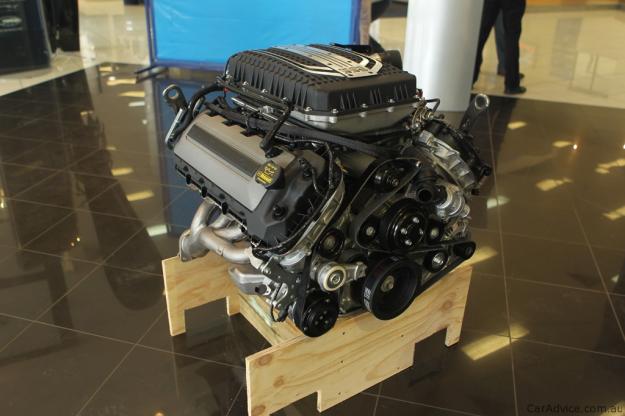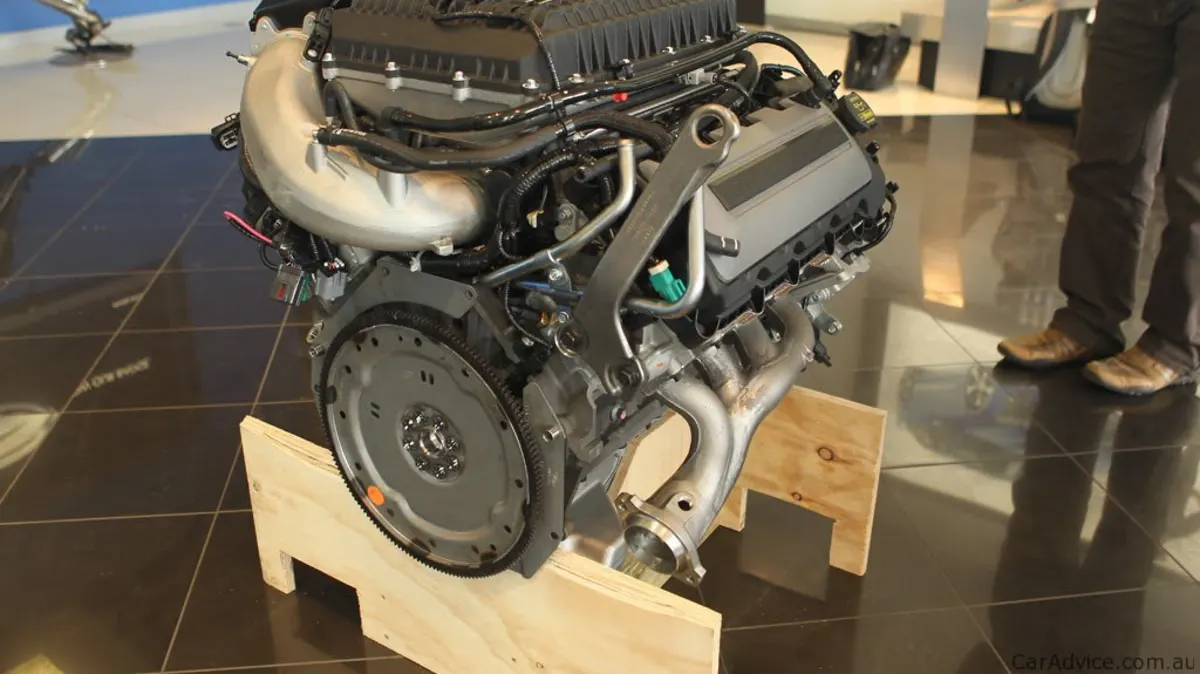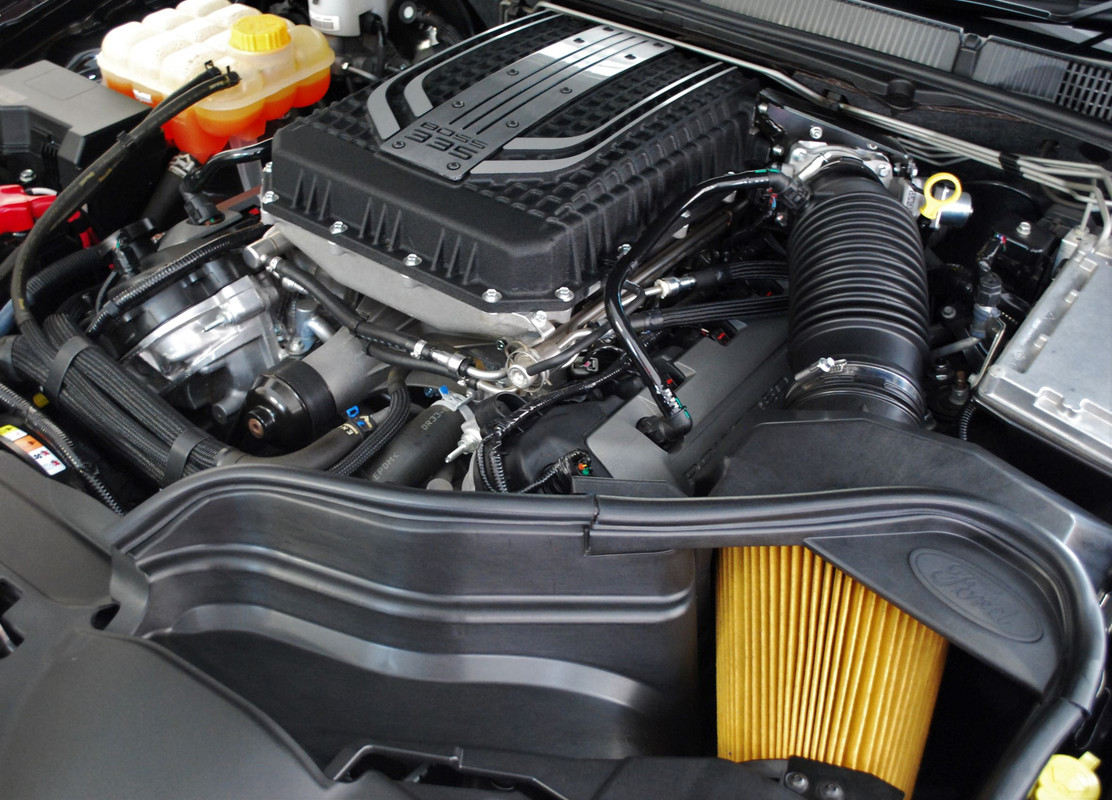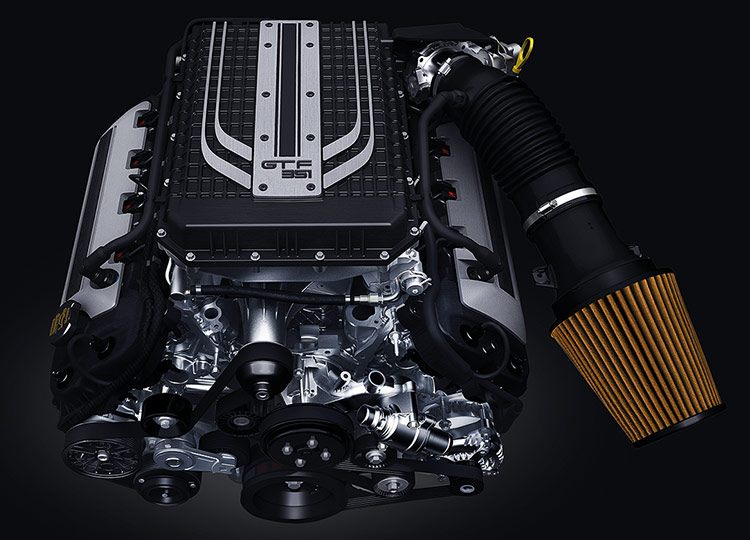The vast majority of Falcon's (and Holdens for that matter) were fitted with 6 cylinder engines. And while that will be a story for later on, the V8 was always the hero of the range.
The high-powered V8 Falcon’s, again much like their cross town rival Holden, were Australia’s muscle cars. We did not get Mustang’s, Camaro’s or Challenger’s in Australia, but we did have fast sedans, wagons and Utes. Indirectly, the big performance Falcon’s were replaced by imported Mustangs, the first time they had been made at the Flat Rock factory in right-hand-drive.
The last V8 powered Falcon’s were just a little special though. These Coyote based 5.0 V8's were fitted to Falcon's from 2010 to 2016. They were codenamed Miami and locally assembled by hand at the Geelong engine plant, where the engine builder would stamp his initials under the supercharger snout. These Miami V8's were the first Ford in the world to have a factory fitted supercharged Coyote.

These engines were an amalgamation of parts, so there are no direct equivalents within the Ford world. As mentioned earlier, these engines were locally assembled in Australia rather than being crate engines like GM-Holden used in the Commodore (Chevy SS) (LS3's). Most components like the block and heads were imported. The Miami V8 had a locally designed intake manifold to support a Harrop HTV 1900 with Eaton Twin Vortices Series rotors that were originally developed for Jaguar. They used the Boss 302 rotating assembly and locally designed exhaust headers. Unlike the Coyote, these engines only used VCT on the intake cams. Once assembeld at either FPV or at the Geelong engine plant, they were crated over to the assembly plant in Broadmedows on the outskirts of Melbourne.







The huge open cold air intake was standard to introduce some induction note to the soundtrack.

While a Coyote is all about top end power, these engines hammer from idle to redline, which is set at 6250 rpm. The consequence of such grunt is hellacious fuel consumption! And that little number is liters per 100km.........11.5 mpg. :laughing:

The initial power outputs of these engines in 2010 were heavily restricted -
Falcon GS with the Boss 315 - 315 kw / 422 hp and 545 Nm / 402 ft-lb
Falcon GT with the Boss 335 - 335 kW / 449 hp and 570 Nm / 420 ft-lb
Some of the power restriction was down to saving room for future models, the throttle on these engines, especially the Boss 315, was restricted to open up to only about 70%. And because these engines were not fitted with an intercooler, although the manifold was designed for one, the tune of the engine had to take thermal management into consideration. There were also structural concerns with the Falcon's firewall and it's ability to take more power and torque. This meant upgrades were needed and therefore another round of crash tests, a process that Ford did not want to invest in at the time.
It wasn't until customers started putting these cars onto dyno's and the stated power outputs were being made at the rear wheels! that people started to question the quoted power outputs. It took a few years for the real story on power outputs to come to light. And it comes back to those thermal management issues.
On a cool day, these engines would over-boost up to 500 hp. When the sensors detected higher engine bay temps, the PCM would pull the boost back. Due to rules surrounding how power outputs are quoted, despite having the ability to make 500 hp, the 449 hp was the least it would make and therefore the number that had to be quoted/advertised.
Later versions of the Miami V8 appeared in the Falcon GT-F and Falcon XR8 Sprint as swansongs to the Falcon nameplate.
Falcon GT-F with the Boss 351 - 351 kw / 471 hp and 570 Nm / 420 ft-lb
Falcon XR8 Sprint with the Boss 345 - 345 kw / 463 hp and 575 Nm/ 420 ft-lb
These versions had more sophisticated thermal management via boost control per gear. On over-boost, the Boss 351 would make 420 kw / 563 hp and the Boss 345 would make 400 kw / 536 hp. Again, Ford was obliged to quote the lowest possible figure. A Falcon GT-F had the potential to do 0-100 / 0-62 in just on 4.5 seconds.


My XR8 is fitted with the Boss 335 version. You can certainly feel the power management in effect on a hot summers day, the car feels a touch neutered. On a cool Autumns day however, the thing is a wild ride with relentless torque. The Miami V8 is also butter smooth. Even with 275 wide tires on the back, these cars were almost like unguided missiles, they really struggle with power down and because the engine was tall and wide, they are somewhat nose heavy. As a long distance cruiser with the ability to easily overtake, they were in their element. And when driven within their abilities, they are fast, stable and enjoyable to drive with enthusiasm. Mine has a ZF 6 speed auto, I love the snap/crack they engineered into the upshift spark-cut, VERY addictive.

It's the noise that makes me smile the most though -
https://www.youtube.com/watch?v=qTq1yIOfVK4
https://www.youtube.com/watch?v=ZEJzrKHbaAQ
https://www.youtube.com/watch?v=ztB-CMfDD9k
https://www.youtube.com/watch?v=SVIHlJ0of6o
https://www.youtube.com/watch?v=MCDvKGkqEoY
I love this hot lap around Bathurst from the GT 335 launch back in 2010 -
https://www.youtube.com/watch?v=CBaj5uhB_XE
While my Mustang shouts about it's performance, I love how the XR8 is a bit of sleeper, especially in grandpa burgundy.

 ...then chose a set of keys and get after it
...then chose a set of keys and get after it ️
️

















